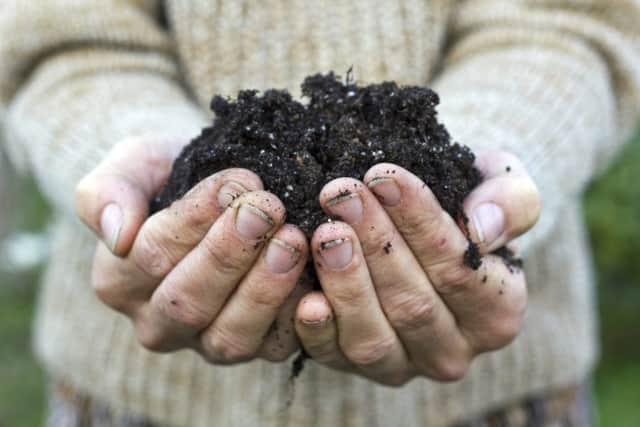Kenneth Loades: A grounding in soil science for engineers


2015 is the International Year of Soils, highlighting how much we owe to soils. Looking at soils from an engineering perspective is one area that is easy to overlook but, like soil for food production, it is literally the foundations. We rely on soils to provide us with the platform on which to build our towns and cities and the infrastructure connecting them. Initial studies by specialised engineers assess the suitability of the ground for the proposed development. These engineers, geotechnical engineers, often recommend a strategy of ground improvement to improve its engineering properties, for instance how much weight the soil can hold and how stable the soil will be long term.
One of the most common materials used in ground improvement is cement but due to its production accounting for 5 per cent of annual global carbon dioxide emissions, researchers at the James Hutton Institute and the University of Strathclyde are developing alternative technologies for improving the engineering performance of soils using natural approaches.
Advertisement
Hide AdAdvertisement
Hide AdThere is a growing area of research into the use of plant roots to stabilise soils. Plants play multiple roles in stabilising soil such as removing water and binding soil together. Some plant roots are particularly good at going deep into soil but may not produce a large quantity of roots, for example trees. Alternatively some, such as grass, produce a large number of shallow, fine roots.
Understanding variability over the seasons is also critical as root systems change. Such variability concerns engineers as they need to know how strong a particular approach will make the soil for long-term stability. This is a complex problem. Not only do you have huge variability in plant root systems but also changes to roots dependent on the soil environment.
Plants, however, are very clever and can adapt to different soil conditions. If a soil is particularly hard, compact, roots can make themselves fatter letting them to go into soils better. In some species when a root starts to suffer due to reduced oxygen in soil, for example resulting from waterlogging, they can alter their internal structures to make it easier for oxygen to reach the growing part of roots, the tips. Another strategy is to make the root more water resistant through the production of lignin. Although we know what happens, we must also understand the effect on the mechanical properties, such as how resistant they are to breaking and also how elastic they are. Some roots are very stretchy, like rubber, with others being very stiff, more like wire. Understanding what drives these differences will allow optimization of the root system of different plants depending on what the application requires.
Another new and promising area of research for stabilising soils is the use of bacteria. Some bacteria commonly found in soils can be used to trigger a chemical process, producing a biogrout. This can bind soil particles together, making the soil stiffer, stronger and also make it more difficult for water to pass through it. Essentially, starting from loose sand, it is possible to create sandstone. What takes much much longer to occur in nature we can engineer to take place in days, making it a useful technology for preparing the ground before construction.
Some of the challenges include controlling where the biogrout forms, and how even the level of grouting is so you end up with similar engineering properties across the volume of soil treated. At present the process relies on injecting a single type of bacteria into the ground to produce the biogrout, however in the future the hope is that we could make use of the bacteria already present in the ground.
There is so much that ground engineers can learn from nature – this is only the beginning. Hopefully by making use of natural processes we can develop more efficient engineering solutions with reduced environmental impact.
• Dr Kenneth Loades is a research leader at the James Hutton Institute, and worked on this article with Dr Gráinne El Mountassir, lecturer in geotechnical engineering at the University of Strathclyde. Visit www.hutton.ac.uk for more information.